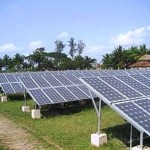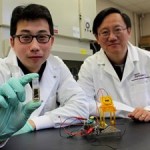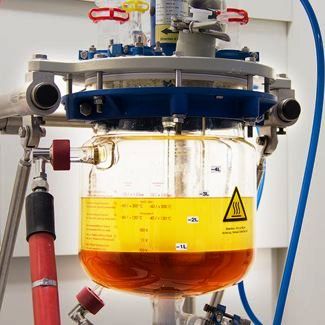To back up a commercial wind turbine, a large storage tank would be needed, possibly located in a below-grade basement, said co-lead author Michael Marshak, a postdoctoral fellow at SEAS and in the Department of Chemistry and Chemical Biology. With a whole field of turbines or a large solar farm, one could imagine a few very large storage tanks.
The same technology could also have applications at the consumer level, Marshak said. “Imagine a device the size of a home heating-oil tank sitting in your basement. It would store a day’s worth of sunshine from the solar panels on the roof of your house, potentially providing enough to power your household from late afternoon, through the night, into the next morning, without burning any fossil fuels.”
“The Harvard team’s results published in Nature demonstrate an early, yet important technical achievement that could be critical in furthering the development of grid-scale batteries,” said ARPA-E Program Director John Lemmon. “The project team’s result is an excellent example of how a small amount of catalytic funding from ARPA-E can help build the foundation to hopefully turn scientific discoveries into low-cost, early-stage energy technologies.”
Team leader Aziz said the next steps in the project will be to further test and optimize the system that has been demonstrated on the bench-top and bring it toward a commercial scale. “So far, we’ve seen no sign of degradation after more than 100 cycles, but commercial applications require thousands of cycles,” he said. He also expects to achieve significant improvements in the underlying chemistry of the battery system. “I think the chemistry we have right now might be the best that’s out there for stationary storage and quite possibly cheap enough to make it in the marketplace,” he said. “But we have ideas that could lead to huge improvements.”
By the end of the three-year development period, Connecticut-based Sustainable Innovations, LLC, a collaborator on the project, expects to deploy demonstration versions of the organic flow battery contained in a unit the size of a horse trailer. The portable, scaled-up energy storage system could be hooked up to solar panels on the roof of a commercial building, and electricity from the solar panels could either directly supply the needs of the building or go into storage and come out of storage when needed. Sustainable Innovations anticipates playing a key role in the product’s commercialization by leveraging its ultra-low-cost electrochemical cell design and system architecture already under development for energy storage applications.
“You could theoretically put this on any node on the grid,” Aziz said. “If the market price fluctuates enough, you could put a storage device there and buy electricity to store it when the price is low and then sell it back when the price is high. In addition, you might be able to avoid the permitting and gas-supply problems of having to build a gas-fired power plant just to meet the occasional needs of a growing peak demand.”
This technology could also provide very useful back-up for off-grid rooftop solar panels – an important advantage considering some 20 percent of the world’s population does not have access to a power distribution network.
“The intermittent renewables storage problem is the biggest barrier to getting most of our power from the sun and the wind,” Aziz said. “A safe and economical flow battery could play a huge role in our transition off fossil fuels to renewable electricity. I’m excited that we have a good shot at it.”
William Hogan, Raymond Plank Professor of Global Energy Policy at Harvard Kennedy School and one of the world’s foremost experts on electricity markets, is helping the team explore the economic drivers for the technology.
Trent M. Molter, president and CEO of Sustainable Innovations, LLC, provides expertise on implementing the Harvard team’s technology into commercial electrochemical systems.
Check the following link to read/download the Full Study – “A Metal-Free Organic–Inorganic Aqueous Flow Battery”:
http://www.nature.com/nature/journal/v505/n7482/full/nature12909.html
Source: By Paul Karoff, SEAS Communications, Harvard.














